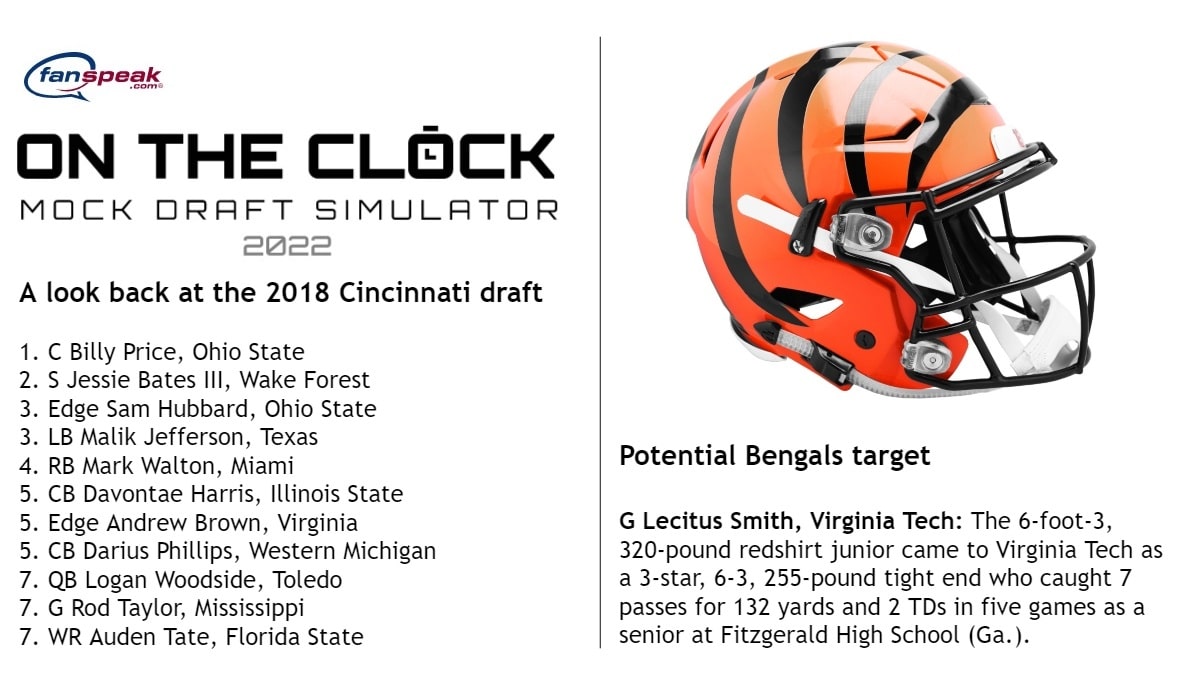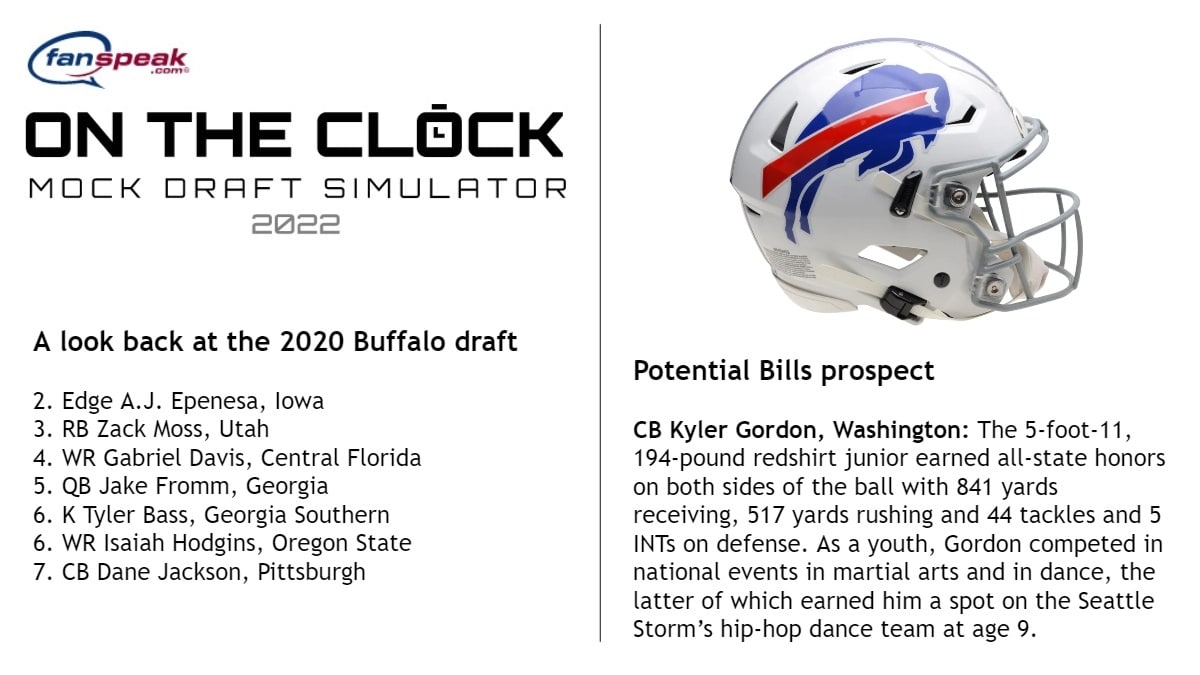If Cincinnati wants a starting OT, it almost has to reach for one in the 1st Round of 2022 NFL draft

 Pencil in offensive line as Cincinnati’s biggest need heading into the draft.
Pencil in offensive line as Cincinnati’s biggest need heading into the draft.
The team allowed 55 sacks in the regular season, third-most in the league. That averages out to a little more than 3 per game.
Those were the good ol’ days.
Since then, the Bengals have surrounded 11 more sacks, including an NFL-record 9 last weekend in the team’s thrilling win over Tennessee.
There wasn’t just one or two players to blame against the Titans. It was a collective miserable outing. Of note:
- Right guard Hakeem Adeniji gave up 3 sacks and 4 pressures, according to Pro Football Focus
- Left tackle Jonah Williams gave up 2 sacks and 5 pressures
- Center Trey Hopkins and LG Quinton Spain each gave up 1 sack
- Right tackle Isaiah Prince was the only lineman who didn’t officially give up a sack against Tennessee, but miscommunication on his end led to another sack.
So now Cincinnati enters Sunday’s AFC Championship game against Kansas City having given up 66 sacks, including 11 in two playoff games.
They’ll face a Chiefs team that ranked toward the bottom of the league – 29th out of 32 teams – with only 31 sacks in the regular season. But don’t assume the Bengals’ OL gets a reprieve. Kansas City’s Chris Jones, who plays both end and tackle, has 9 sacks this season, ranking him fourth among all interior defensive linemen. Overall, Kansas City had 2 sacks against Pittsburgh and 2 more against Buffalo.
But give Cincinnati credit: The team has done everything it can to improve the line in recent years through the draft. They just haven’t hit on many prospects. Considering the Bengals’ recent draft history:
- 2021: All three linemen are now backups, including G Jackson Carman (second round), OT D’Ante Smith (fourth round) and IOL Trey Hill (sixth round).
- 2020: RG Hakeen Adeniji, who was drafted as a tackle in the sixth round that year, has a PFF score of 48.3, lowest among starting Cincinnati linemen.
- 2019: OT Jonah Williams was the team’s first-round pick, and he’s arguably the team’s best offensive linemen with a PFF score of 77.5, tops on the team. Cincinnati also drafted G Michael Jordan in the fourth round that year. He started 19 games his first two seasons before Cincinnati released him, where Jordan now plays for Carolina and is on-and-off the practice squad.
- 2018: First-round center Billy Price never panned out and was traded to the New York Giants earlier this season. Seventh-round guard Rod Taylor is no longer in the league.
- 2017: Fifth-round center J.J. Dielman retired three days after signing with New England in 2019, his sixth different team.
Cincinnati also starts two previously undrafted rookie free agents along its line in LG Quinton Spain (72.3 PFF grade) and center Trey Hopkins (51.4). Spain is an UFA. Carman, though, should get an extended look at the position next season, regardless of Cincinnati’s plans for Spain.
And it should be noted that OT Riley Reiff, who started the first 11 games before missing the rest of the season with an ankle injury, is expected to be cut.
The problem with all this is how the draft is projected to play out.
The challenge isn’t with the depth of the offensive tackle position, it’s how that depth is spread out.
Thus far, there are five OTs in the latest Fanspeak-Jake Rigdon big board ranked among the top 32 players, eight in the top 60 and nine in the top 75. By comparison, the latest two-round mock draft by The Athletic’s Dane Brugler includes four OTs ranked among the top 32 and nine among the top 64.
However, there’s a big gap after the top three OTs, then another gap after the top eight.
Will eight offensive tackles get drafted before Cincinnati is on the clock? Probably not, but any player after the top six could be considered a reach.
Still, Cincinnati wouldn’t turn many heads by taking, for example, Minnesota’s Daniel Faalele in the first round, even though he’s generally ranked as a Round 2-type of player by many analysts (he’s No. 60 in the Rigdon big-board). But the Bengals might turn some heads by taking a tackle like Arizona State’s Kellen Diesch with their pick in the back of the second round. Remember, second-round picks are expected to play, if not start. So if Cincinnati reaches for a tackle like Diesch in the second round, then he’s probably going to play, ready or not.
You could make an argument for Carman falling into that trap. Generally considered a Round 3 or later guard by draft analysts, the Bengals took him in the second round out of Clemson last year, then started him the first five games before his eventual demotion to Hakeem Adeniji, a 2020 sixth-round pick out of Kansas. Carman barely played after that.
Could Carman eventually develop into a starting-quality guard? Of course, but you typically expect a slower learning curve the lower a player is drafted. So, by that logic, if Faalele is barely considered a starting-caliber tackle as a reach in the first round, then expecting a tackle who is a reach in the second round to also start – and perform well – is an even bigger gamble.
With that said, it’s easier to find starting-caliber interior linemen on Day 3, so Cincinnati doesn’t have to panick if guards like Texas A&M’s Kenyon Green is unavailable in the first round or Kentucky’s Darian Kinnard, Tulsa G/T Tyler Smith and Boston College’s Zion Johnson are unavailable in the second round.
Click here to see which offensive linemen the Bengals take – and what round they were drafted in.


